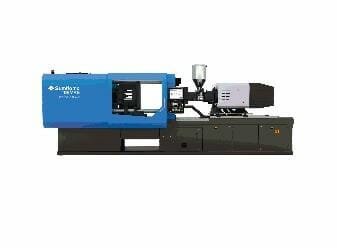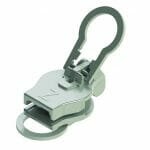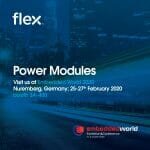Adopting all-electric manufacturing technology is fast approaching a new tipping point. As factories shift toward cleaner more resource efficient technology, Sumitomo (SHI) Demag reports that 55% of new UK machine sales were from its electric IntElect range in 2019. Interestingly, the rationale is not purely focused on lowering carbon emissions, but also giving polymer manufacturers higher power density, increased efficiency and improved reliability. Nigel Flowers, Managing Director at the UK company lists 10 compelling reasons why injection moulders are swapping their hydraulic and hybrid machines to all-electric.
- Up to 1.5 years return on investment (ROI), with the latest technology. This is over six years faster than half a decade ago, when all-electric ROI was eight years.
- Process optimisation and validation. Boosting manufacturing productivity is not simply the case of installing the best injection moulding machine, but also knowing how operatives can leverage its potential performance to the max and put into practice. As a discipline, validation extends beyond the medical moulding market and process optimisation follows a similar methodology, ensuring repeatability of the set-up conditions throughout the machine’s full lifecycle. It’s good manufacturing practice, helping to minimise product defects and meet customer quality requirements.
- Shorter cycle times. Because all-electric injection moulding machines have independent motors, overlapping motion control is possible. This means they can perform multiple tasks at once, for instance inject plastic while at the same time building clamping tonnage. Cycle times of less than five seconds are commonplace now on all-electric systems.
- Improved repeatability. Moulders are constantly seeking new ways to be more resource efficient in order to generate new value, minimise costs, and increase operational stability. The fine control delivered via electric servo drive systems ensures consistently high quality standards are repeatedly maintained.
- Better component quality. Accurate dosing is critical when producing high precision plastics. Once dosing is complete, the non-return valves on today’s most advanced all-electric systems close securely during the injection and hold stages. This means fluctuations in the melt viscosity do not need to have a knock-on effect on closing behaviour, melt cushion, shot weight or – ultimately – the quality of the final part.
- Tighter machine tolerances: For industries where precision is paramount, such as medical appliances or electronics, the combination of electric drives and digital control can turn injection moulding into a predictable and precise operation. Weight variations in critical parts can be as low as 0.0001g, resulting fewer defects and subsequently less waste.
- Reduced energy use. The drives on all-electric moulding machines run and consume electricity only when required, compared to the ‘always on’ technology of standard hydraulic machine. For example, Sumitomo (SHI) Demag’s latest IntElect2 series is more energy efficient than most household appliances. In dry cycling, the IntElect uses 2.15 kW/h compared to 2.4 kW/h for boiling a kettle! What’s more, kinetic energy can be recovered and reused. For example, while the clamping unit is braking, energy generated can be used for plastification.
- Lower maintenance costs. Housekeeping requirements and downtime on electric equipment can be half that of a hydraulic machines. Having fewer process steps also means all-electric machines are less mechanically complex, with no stretching of hoses, sticking of valves and no hydraulic fluid to heat up or compress. This means less can go wrong and fewer emergency calls outs. What’s more, there’s no oil, and so no risk of fluids leaking to cause cross contamination.
- More complex moulds, which as a result are typically larger, yet still have relatively low shot weights. This is especially true in the medical market. The flexibility of an all-electric machine enables customers to select the optimal combination. For example, automotive moulders previously limited to larger tonnage machines, can opt for a more compact, less energy intensive unit, such as the new IntElect 500. By increasing the tie bar spacing, the latest machine generation now accommodates a greater mould height.
- Easy installation. Once set up correctly, an all-electric machine runs without the need for any modifications or operator intervention. One key benefit is digitally controlling the screw position during filling and hold, allowing just the right amount of material through, which in turn optimises resin usage and prevents undue stress being placed on the mould.
Every year the gap between hydraulic and all-electric closes a little bit more. In 2018, the UK injection moulding market was spilt 26% electric/74% hydraulic. Although official data for 2019 isn’t out until May, Nigel anticipates that the adoption of all-electric machinery last year will have risen in the UK to 30%. And the latest generation of IntElect’s, which comprises packages created specifically for the automotive, medical, precision engineering, and multi-component segments, closes the price and performance gap even further.








